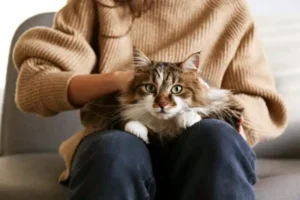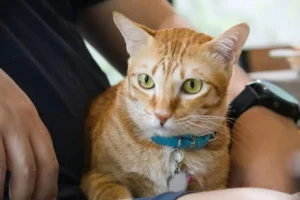
8 Easy Steps to Successfully Collar Train Your Cat According to Experts
When most people think of pet collars, they often associate them with dogs. However, cats also need collars for safety and identification purposes. Teaching a cat to be comfortable with wearing a collar is a long process that requires patience, strategic thinking, and knowledge about how cats behave. This comprehensive guide will help your cat get used to wearing a collar through step-by-step instructions that incorporate product history, expert opinions, as well as technical aspects.
Step 1: Choosing the Right Collar
Selecting the right collar is very important. The purpose of a cat’s collar is what makes the difference between different collars. Some are meant for only identification where you can add an ID tag while others have additional uses such as relieving anxiety or controlling fleas.
Cat collars have gone through significant transformations over time. For example, breakaway collars were created in response to safety issues; they come apart when there is too much pressure on them. Sustainable materials like hemp are now being used by modern companies like Hepper to produce durable eco-friendly collars which usually have adjustable closures and quick release buckles with bells to keep birds from being hunted down thereby protecting wild life.
Step 2: Find a calm environment and the right time
First, you should choose a calm and distraction-free environment in which to teach your cat how to accept wearing a collar. Such places include areas where your cat is comfortable like their favorite room or sleeping place.
Also, train your cats during mealtime so that they can use their natural motivation for food without causing unnecessary stress due to hunger. You can also add some forms of calming agents such as feline pheromone sprays to create a soothing atmosphere.

Step 3: Gradually Introduce the Collar
You should always remember that cats are creatures of habit; hence it is important to gradually introduce the collar. Your pet will need some space to adjust individually. For example, you can put the collar next to their resting places with familiar smells lightly scented onto it or some catnip and pheromones.
Historically, gradual introduction techniques have proven effective, as they reduce anxiety and help establish positive associations with the collar.
Step 4: Reward Positive Association
Positive reinforcement is crucial in training your cat. Use treats or toys that your cat likes best as rewards for correct behavior when the collar is worn by them. Open up the collar and tempt your pussy cat into voluntarily putting her head through it in order to get at the reward inside.
Consistent praise and reward-based interactions establish strong positive associations that minimize resistance and anxiety.

Step 5: Properly Fitting the Collar
Fitting the collar correctly is crucial for your cat’s comfort, as well as, safety. Start by loosely fitting the collar then adjust accordingly. In general, it should be fitted with a one to two finger gap between it and your cat’s neck. For kittens or smaller cats, one finger-width is sufficient.
Trim any excess collar length carefully so as to avoid discomfort or entanglement risks.
Step 6: Building Confidence and Comfort
As soon as you have put on the collar, give your cat some time to adjust. It is normal to see initial reactions like scratching at the collar or mild distress. Distract your cat gently with toys or treats and praise calm behavior consistently.
Gradually extend their tolerance through repeated short sessions wearing the collar thereby building confidence and comfort incrementally.
Step 7: Regularly Check Collar Fit
Collar fit needs regular monitoring. Cats’ body sizes can fluctuate especially in growing kittens or older cats experiencing weight changes. Make sure that it is snug by regularly inserting one or two fingers underneath the collar when checking its fit.
To prevent discomfort and avoid the collar becoming either too loose or too tight, thereby reducing injuries or escapes.
Step 8: Maintain the Collar and Monitor for Wear
Regular maintenance of the collar will ensure your cat’s safety and comfort. Periodically check to see if there are any signs of wear and tear from grooming and daily activities. A new one is immediately necessary if there is any significant wear or structural compromise.
Also, it is important to keep track of your cat’s skin underneath the collar which might show irritation or allergies particularly with collars that have chemical treatments like flea prevention.

Why Collar Safety Matters
In the past, designs such as those that were elasticated or buckled carried far too many risks as they could get caught in things but not be released. These old-fashioned designs caused injuries or deaths, leading to a switch to breakaway collars that were specifically made for safety. If you cannot find breakaway collars, they are not advertised under this name but you can still make them yourself at home without necessarily buying them.
CONCLUSION: ENSURING YOUR CAT’S SAFETY AND COMFORT
Whether your cat is strictly an indoor pet or it goes outdoors, collar training can help identify and locate them quickly which enhances safety. The gradual introduction of collars and positive reinforcement will greatly improve the acceptance by feline pets. It is essential to be patient because this kind of training may take time, consistency in your acts will make your cat accept their collar better and routine checks are required for a comfortable and safe experience.
By following these steps carefully as mentioned above, you will soon be able to have your cat comfortably wear his collar therefore giving all cat owners peace of mind.

